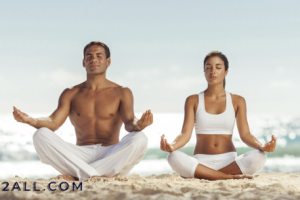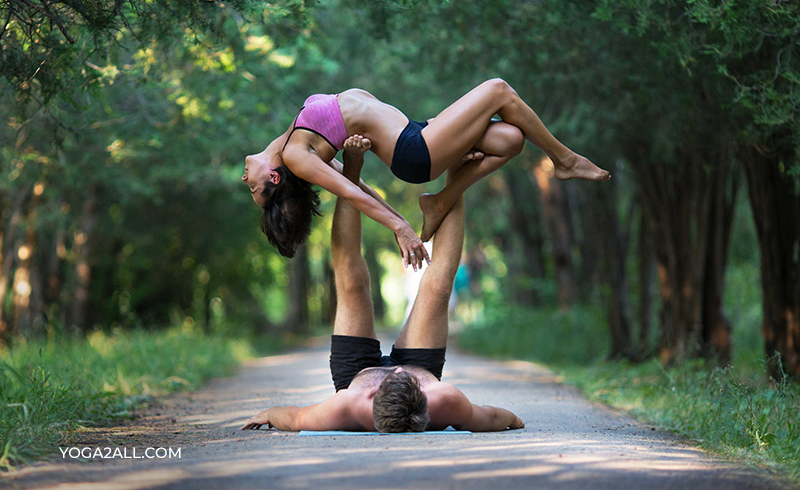
You certainly have many questions in mind about yoga. Are you questioning yourself whether yoga is good for all-round sexual health? Do you believe that yoga is good for the purpose of sex, yoga is good for libido, and yoga is one of the best exercises for ejaculation and erectile dysfunction? All your answers are ‘yes’, yoga is good for all types of positive sexual health.
In the Sanskrit language, the word “Yoga” means CONNECTION or UNION. The principle underlying yogic practice is the union of the individual self with the supreme self or the ultimate self. The practice of yoga through different yoga postures or asanas, pranayama or breathing exercise, and meditation embodies the connection of mind, body, and spirit. Yoga is an ancient science, originated in India that leads us to an awareness of our inner self, thereby guiding us on the journey to unite with the universal self. Here, we have discussed different yoga poses, yoga for men, yoga for women, yoga for old or yoga for seniors in brief, so that you can pick your required yoga up and practice independently at home. It is better if you practice in presence of a yoga teacher.
Here in this article, we will tell you the hidden secret of yoga. Yoga not only good for your body and mind, including your spirit but also good for your sexual health; yoga has immense sexual health benefits. See when you practice a mind and body exercise, you will certainly develop a robust health, disease free health and no doubt your sexual health will improve.
Patanjali was a great sage, widely known for yoga, who wrote the treatise on yoga, also called the Yoga Sutras, has defined yoga as CITTA-VRITTI-NIRODHA, which means restraining the mind from taking different forms. It indicates controlling the tendencies of the mind to transform it from a state of ignorance to a state of awareness or wisdom.
Yoga comprises physical exercises, a wide array of breathing techniques or pranayama, and meditation or dhyana. It is important to understand that yoga is much more than merely a regimen of fitness exercises. Physical exercises of asanas help us to make our body physically fit. They prepare us for the next levels of yoga by opening up our energy channels or Nadis. By controlling our breathing (In-hale and Exhale) pattern by way of the practice of pranayama, we can change the functioning of our body.
Yoga for Sexual Health Benefits!
If you are not a health freak or if you do not like yoga at all, but looking for something that can help boost your mental as well as sexual health then yoga can be your choice. Now we will tell you some postures or yoga for sexual health. Your searching online with the phrase or keywords yoga for sex or yoga for sexual health will be ended here right here, right now. There are some good reasons behind your exercise secret, and if it is yoga, then your secret list will go on. Yoga can do a miracle with your sexual life, and you will be a superpower of it. Are you laughing? Please do not, because we are absolutely serious.
Because yoga is a form of exercise that helps connect your mind and body, due to the reason yoga is called a form of mind-body connection exercise. Yoga helps develop your calmness, improves stamina, agility, skills and certainly the knowledge of your own body. You just need to do a small adjustment in your day to day tight routine, yes for yoga and yoga for sexual health benefits.
If you are having an issue related to your ejaculation or if you are suffering from erectile dysfunction, you are advised to read these two posts that can transform your life entirely. The best yoga for libido, yoga for orgasm and certainly the selective yoga for ejaculation, and last, but certainly not the least, yoga for erectile dysfunction.
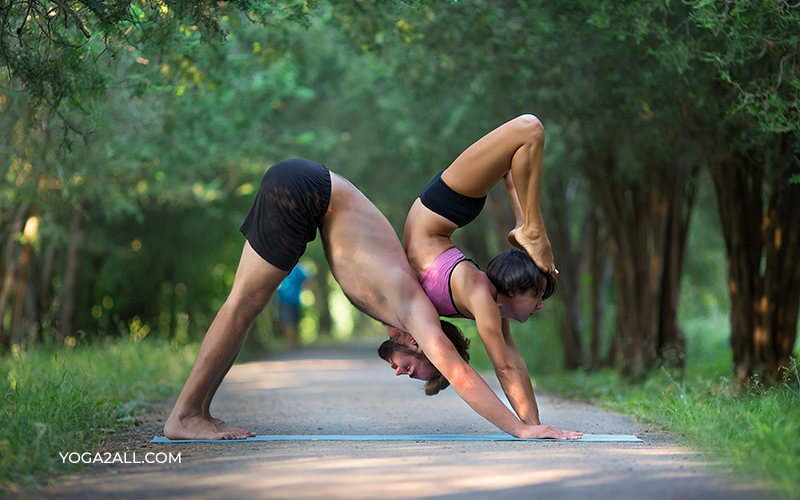
Including Yoga, Meditation also results in the realization of a higher consciousness. All these together help us in achieving the objectives of yogic practice. Yoga embodies the body and mind connection. It is a process that involves realizing blocked tension and energy in the body. It helps us to make the muscles, tendons, joints, ligaments flexible and strong. Apart from the physical benefits of yoga, a regular routine helps us to focus our attention inwards and awakens us to a clearer perception of who we are. By increasing our level of awareness we feel more vibrant, more connected to everything around us, and in harmony with life.
Let us discover the Benefits of yoga
Some of the numerous benefits of yoga are:
- Yoga increases flexibility
- Relief from pain in joints and muscles
- Stronger immune system
- Stronger lung capacity
- Relief from respiratory problems
- Yoga is good to increase metabolism
- Weight loss and better fitness levels
- Relief from sleep disorders
- It promotes peace of mind
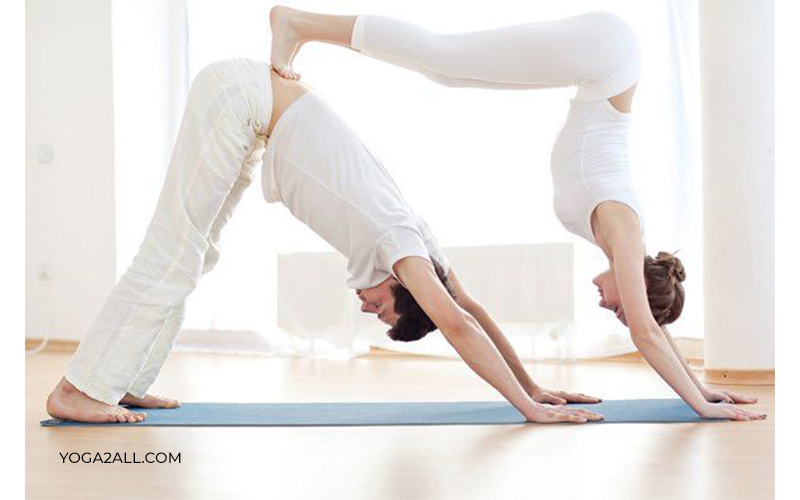
Here, in the chapter, we will discuss asanas or yoga postures such as:
- Bhadrasana
- Vakrasana
- Shoulder & Elbow Movement
- Tadasana
- Konasana
- Trikonasana
- Vrikshasana
Bhadrasana (The Posture of Throne)
The Bhadrasana has many benefits; it is called gracious pose or posture of the throne. This asana activates the root chakra called the Mooladhara chakra. It is well known all around the world for developing the flexibility of our legs. It is an out of the ordinary pose for meditation.
In English translation, the Sanskrit term BHADRA means “THRONE”. Therefore, BHADRASANA means “The Posture of the Throne”. Thus, the physical or bodily pose must not be mingled with BHADRASANA, which is sometimes called “The Posture of the Blessing” that is a bit different.
Benefits of Bhadrasana
- It makes the lumbar region flexible
Techniques of Bhadrasana
- Sit with your legs folded at the knees and the soles of your feet touching each other as near the body as possible.
- Keep your back straight and hold your toes with both the hands.
- Exhale and slowly press the knees down to touch the floor.
- Inhale and slowly live the knees upwards.
- Repeat 10 to 20 times.
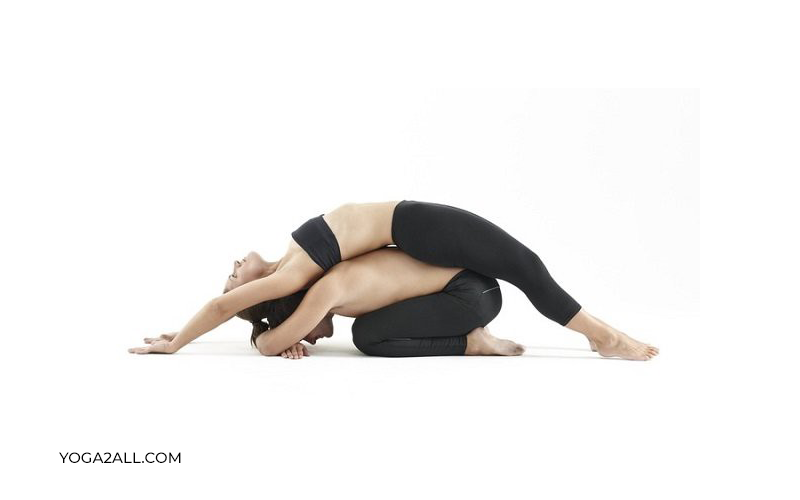
Vakrasana
Technique
- Sit on the floor with your legs straight out in front.
- Keep your back straight and place your hands on the sides with palms flat on the ground and fingers pointing forward.
- Bend your left knee. Place the sole of the left foot on the ground touching the right thigh.
- Place your left-hand flat on the floor about 9 inches behind the back, keeping fingers joined.
- Stretch your right hand over the left knee and hold the toes of your left foot.
- Turn your head to the left as far back as possible.
- Maintain this position for 5 to 10 seconds
- Reverse the process and return slowly to the starting position. Repeat the process with the right leg.
Benefits
- Helps in the treatment of diabetes.
- Relieves constipation.
- Strengthens the kidneys and stomach.
- Makes the spine flexible.
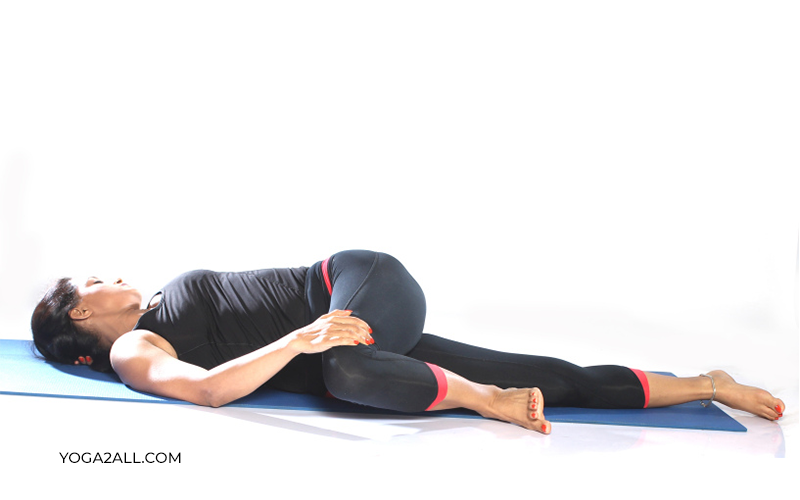
Shoulder and Elbow Movement
Technique
- Sit in a comfortable position with your back straight.
- Stretch your arms out on the sides at shoulder level with palms facing upwards.
- Exhale and bend arms at the elbows to place fingers on the shoulders.
- Join the elbows and rotate arms backward in circular movements 5 to 10 times, keeping fingers on the shoulders.
- Repeat the movement rotating arms forwards in circular movements 5to 10 times with fingers on the shoulders.
Benefits
- Makes the elbow and shoulder joints flexible.
- Strengthens shoulders.
- Strengthens the lungs.
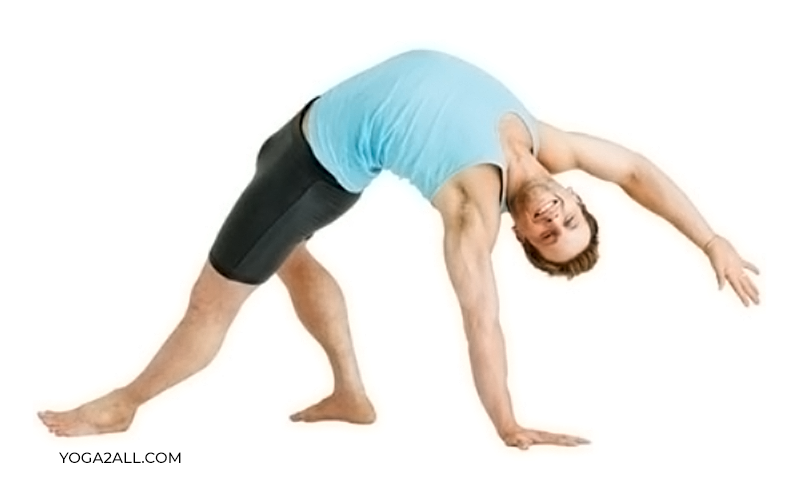
Brahma Mudra
Technique
- Sit with legs crossed in a comfortable position with your back straight and arms straight out in front over the knees.
- Turn your neck slowly to the right as much as possible.
- Return to the starting position.
- Turn your neck slowly to the left as much as possible.
- Return to the starting position.
- Turn your neck slowly backward to look up as much as possible.
- Return to the starting position.
- Turn your neck slowly downwards as much as possible.
- Return to the starting position.
- Repeat the entire cycle 5 times.
Benefits
- Alleviates stiffness in the neck.
- Makes the neck flexible and strong.
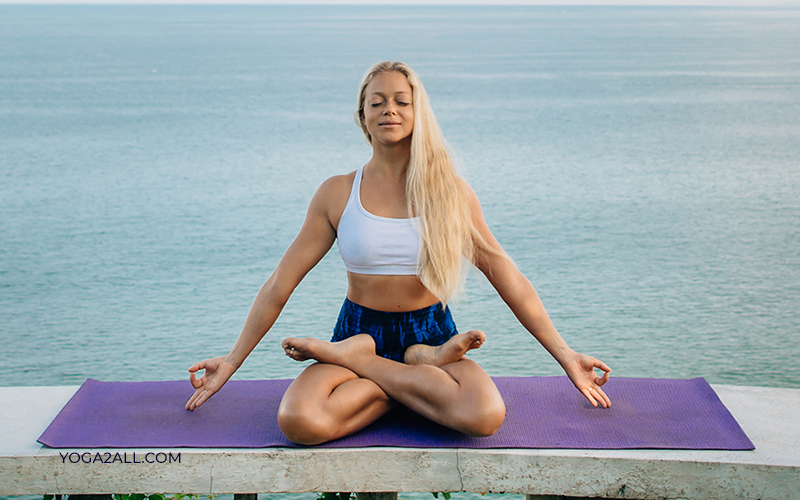
Tadasana
- Stand with arms on the sides, feet joined, and heels on the floor.
- Lock your fingers together and raise your arms up over your head.
- Inhale and raise your body on your toes, stretching your hands up straight towards the sky as much as possible.
- Breathe normally and hold this position for up to one minute (concentrate on a fixed point in front of you to help maintain your balance).
- Exhale and return slowly to starting position.
Benefits
- Makes the spine flexible.
- Strengthens calf muscles.
- Increases height in youngsters.
Note
Persons with ankle pain should take medical advice before attempting this asana.
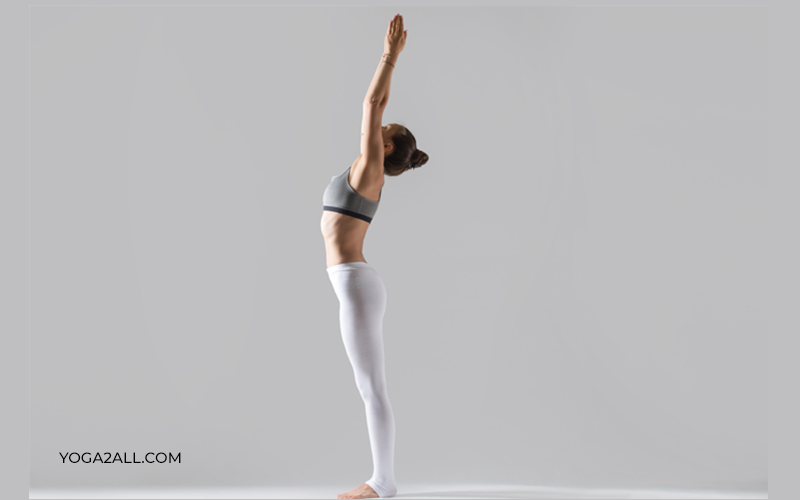
Konasana
- Stand with feet about 1 and ½ feet apart.
- Raise both arms palms facing down, in level with your shoulders.
- Bend laterally to the left. Slowly move your left hand down to touch your calf and lift your right arm up and stretch it as much as possible.
- Stretch your left hand further down to touch your ankle. Count 3 to 10 breaths.
- Return slowly to your original position.
- Repeat with the right side.
Benefits
- Makes the spine flexible.
- Relieves back pain.
Note
Persons with lumbar or cervical spondylitis or hypertension should avoid this asana.
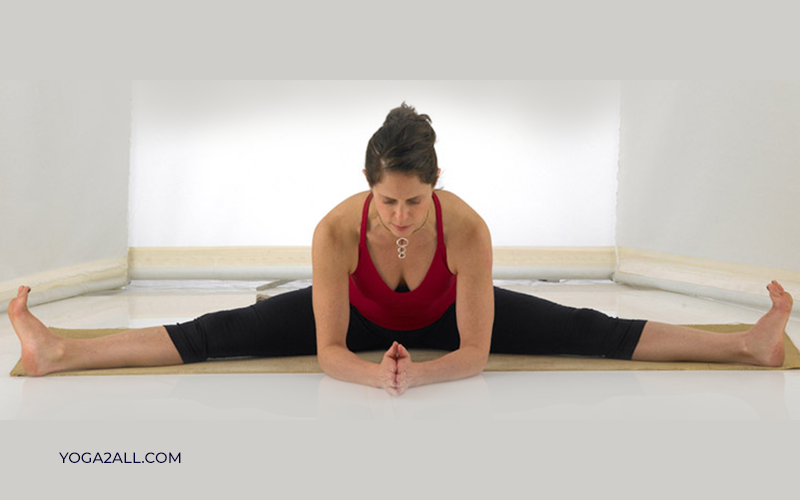
Trikonasana
Technique
- Stand with feet about 2 feet apart
- Raise both arms, palms facing down, to be in level with your shoulders.
- Slowly bend and touch your left toe with your right hand. Do not bend your knees. Raise your left arm skywards.
- Turn your head upwards to the left to look at your left hand.
- Return slowly to the starting position.
- Repeat with the other side.
- Repeat 2 to 10 times for each side.
Benefits
- Makes the spine flexible.
- Relieves back pain
Note
Persons with lumbar or cervical spondylitis or hypertension should avoid this asana.
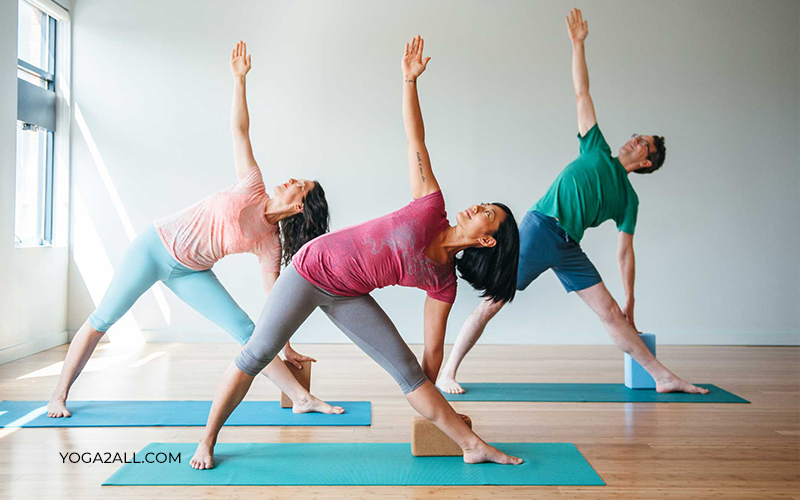
Vrikshasana
Technique
- Stand with hands by the sides, feet together, back straight.
- Bend your right leg at the knee and place the sole on the left thigh joint.
- Join hands in Namaskar and then raise them up over your head and stretch (concentrate on a fixed point in front of you to help maintain your balance).
- Maintain as long as possible and then return slowly to the starting position.
- Repeat the process with the other leg.
Benefits
- Improves body-mind coordination.
- Strengthens thigh and calf muscles.
- Improves concentration.
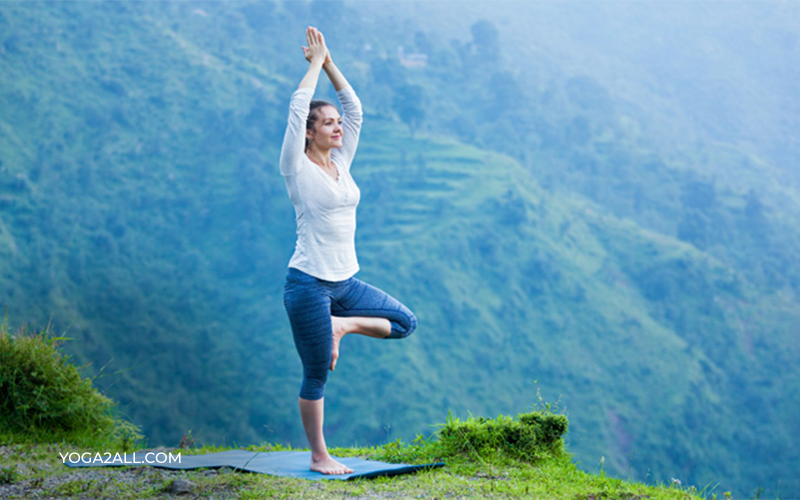
Shavasana
Technique
- Lie on your back keeping a distance of about 1 to ½ feet between your feet.
- Place your hands on the floor with the palms up about 6 inches from your body.
- Close your eyes and relax your entire body.
- Loosen all your body muscles one by one, from the toes upwards. Concentrate on your breathing and watch your breath going in and out.
- Maintain for 10 minutes.
Benefits
- Relieves fatigue.
- Reduces high blood pressure.
- Calms nerves and reduces stress.
- Helpful in sleep disorders.
- Beneficial for heart patients.
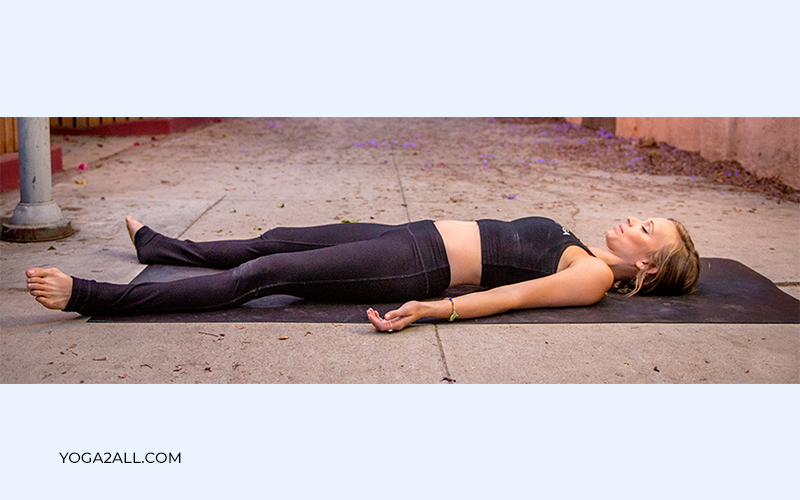
Ardha Halasana
Technique
- Lie on your back with your legs straight and arms beside the body with palms touching the floor.
- Inhale and raise your left leg slowly to 30 degrees angle without bending your knee.
- Inhale and slowly raise it further to 60 degrees angle and then to 90 degrees angle.
- Maintain for 5 to 10 seconds. Exhale and return slowly to the starting position.
- Repeat the same process with the right leg.
Benefits
- Strengthens the back
- Strengthens stomach and thigh muscles.
Note
Persons suffering from back problems should attempt this asana under expert guidance.
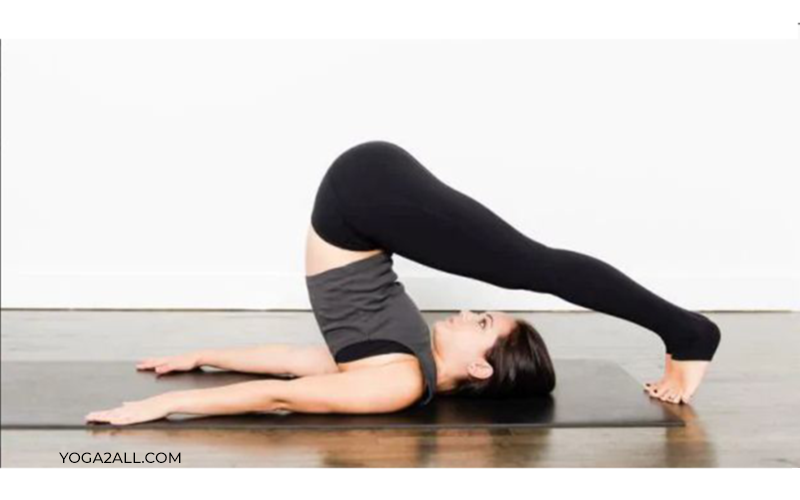
Pavanamuktasana
Technique
- Lie on your back with your legs straight and arms beside the body with palms touching the floor.
- Bend your right leg at the knee and hold your knee with both hands. Ensure that your left leg is straight and that the knee is not bent.
- Inhale and gently pull your right knee towards your chest.
- Exhale and raise your head. Touch your nose to your knee. Maintain this position as long as possible.
- Inhale and reverse the process to return to the starting position.
- Repeat this process with the left leg and then with both legs together.
Benefits
- Relives flatulence
- Tightens stomach muscles
- Relieves back pain
- Beneficial for pregnant women
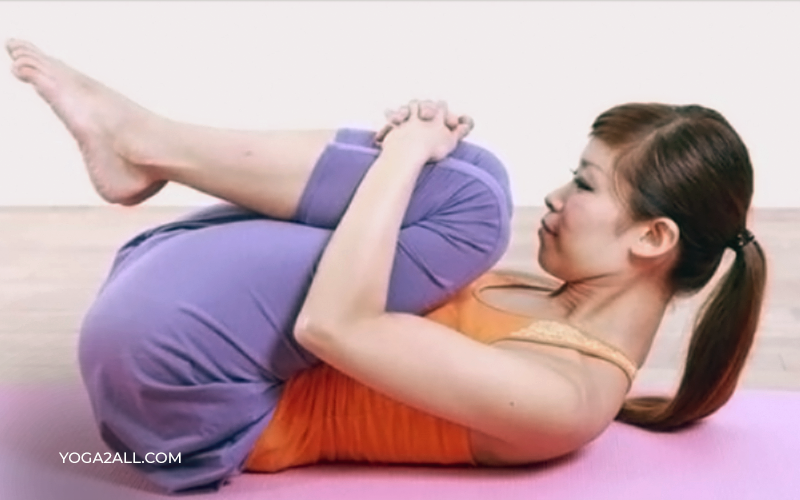
See More:


